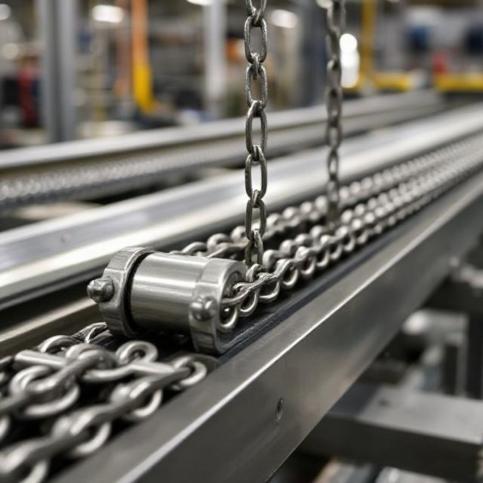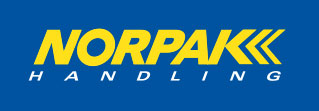Among the different types of conveyors available for material handling, few are as effective as a chain conveyor. Known for moving heavy objects by pushing or pulling, these conveyors have a lot of different components and links that enable their smooth motion. There are also different types of chain conveyors, which were addressed in the previous blog. This blog covers the concept of tensioning in a chain conveyor and how to check if it is appropriate.
What Is Tensioning In A Chain Conveyor?
Tensioning, in the context of a chain conveyor, is defined as the tautness or tightness of the chain. This is key to ensure optimal performance of the chain conveyor and to check for issues such as misalignment, slipping, or premature wear and tear.
Tensioning Check Protocol For Chain Conveyors
- Pick an area for measurement: Choose the area of the chain conveyor where you want to test for tensioning. It should be a part of a chain located between two subsequent sprockets.
- Place a straight edge tool: Use a straight tool where one end is perfectly flat and straight. Place it horizontally atop each sprocket.
- Measure the sag: Now, the main way to check for chain conveyor tensioning is to measure the sag. For this, use a tensioning scale or a ruler if the former is unavailable. Measure the distance between the straight edge and the point in the chain strand where the sag is lowest.
- Compare with allowable recommendations: A completely taut chain is also detrimental for conveyor performance. Therefore, manufacturers recommend a minimal sag of about 2-4 percent. If the sag in the chain strand is within these limits, then the conveyor is properly tensioned. If it is too high or low, it needs to be re-tensioned.
A similar protocol can be followed for conveyor rollers, conveyor belts, and other types of conveyor systems.
For the best quality conveyor solutions, please contact us at Norpak Handling. With decades of experience in offering material handling products and general conveyors across North America, Norpak Handling has built a reputation for providing quality conveyor equipment and solutions, including conveyor belts, conveyor rollers, chains, and more specialized equipment. Contact our experts today and remove all the guesswork when it comes to selecting a sortation conveyor.










